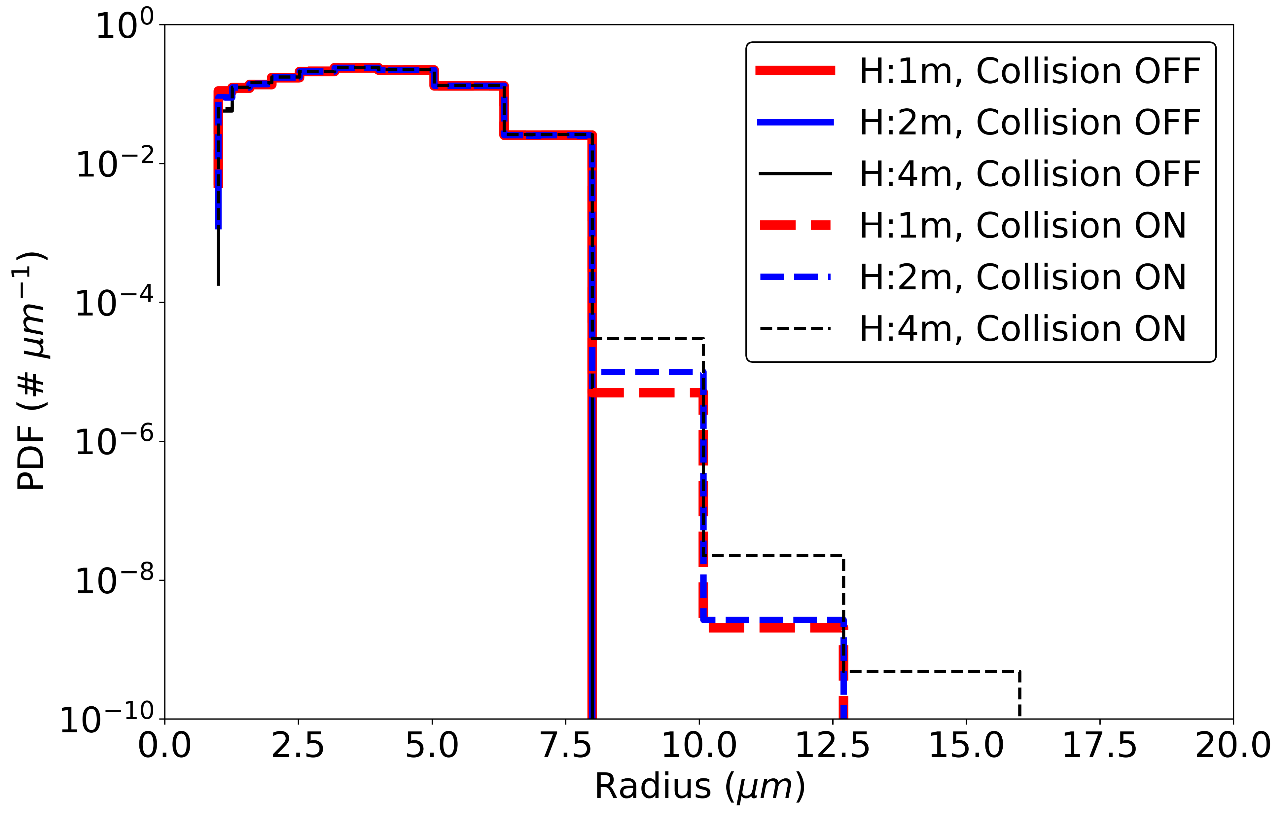Scaling of turbulence and microphysics in a convection-cloud chamber of varying height
Submitter
Yang, Fan — Brookhaven National Laboratory
Ovchinnikov, Mikhail — Pacific Northwest National Laboratory
Area of research
Cloud Processes
Journal Reference
Science
A convection–cloud chamber enables studying the effects of turbulence and aerosol particles on the evolution of clouds in a controlled, laboratory environment. The range of physical processes that may be studied increases with chamber height. We use analytical and numerical models to understand the dependence of turbulence and cloud microphysical properties on chamber height.
Impact
The results suggest that it is possible to achieve significant collision-coalescence growth in a convection-cloud chamber with a height of several meters. The results can benefit the design of a large convection cloud chamber as well as the general understanding and modeling of turbulent and microphysical properties within cloudy, mixed layers in the atmosphere.
Summary
The convection-cloud chamber enables studies of aerosol and cloud microphysics and their interactions within a turbulent environment under steady-state conditions. Increasing the size of a chamber, while holding the imposed temperature difference constant, leads to increased Rayleigh, Reynolds, and Nusselt numbers. We use a large-eddy simulation model coupled with a bin microphysics scheme to explore the influence of increased velocity, time, and spatial scales on cloud microphysical properties for chamber heights (H) out to 4 m. We find that velocity fluctuations scale as H1/3, consistent with the Deardorff expression for convective velocity, and imply that the turbulence correlation time scales as H2/3. Fluctuations of temperature and other scalars scale as H-3/7. Cloud droplet growth by collision and coalescence leads to a broader right tail of the distribution compared to condensation growth alone, and the concentration of large droplets formed by collision coalescence increases monotonically with increasing chamber height. These results also have implications for turbulent, cloudy mixed layers in the laboratory and in the open atmosphere, such as for fog layers.


